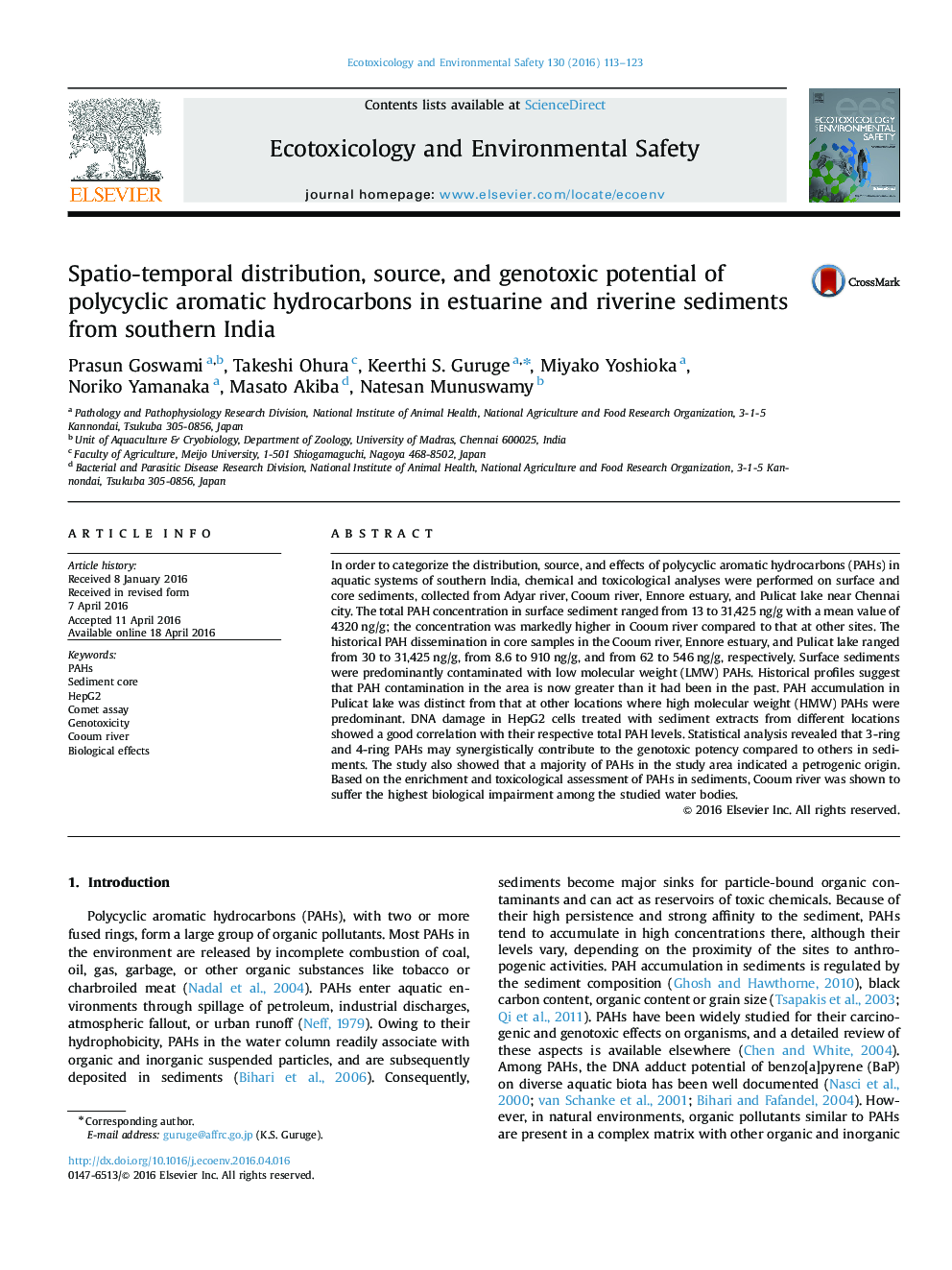| کد مقاله | کد نشریه | سال انتشار | مقاله انگلیسی | نسخه تمام متن |
|---|---|---|---|---|
| 4419181 | 1618933 | 2016 | 11 صفحه PDF | دانلود رایگان |
• Twenty-three PAHs were analyzed in sediments from water bodies near Chennai city.
• PAHs indicated a petrogenic origin, and consisted with low molecular weight PAHs.
• Vertical profiles showed increasing PAH contamination in recent years.
• The genotoxic effect of sediments was positively associated with 3- and 4-ring PAHs.
• Cooum river sustains the highest biological impairment caused by PAHs.
In order to categorize the distribution, source, and effects of polycyclic aromatic hydrocarbons (PAHs) in aquatic systems of southern India, chemical and toxicological analyses were performed on surface and core sediments, collected from Adyar river, Cooum river, Ennore estuary, and Pulicat lake near Chennai city. The total PAH concentration in surface sediment ranged from 13 to 31,425 ng/g with a mean value of 4320 ng/g; the concentration was markedly higher in Cooum river compared to that at other sites. The historical PAH dissemination in core samples in the Cooum river, Ennore estuary, and Pulicat lake ranged from 30 to 31,425 ng/g, from 8.6 to 910 ng/g, and from 62 to 546 ng/g, respectively. Surface sediments were predominantly contaminated with low molecular weight (LMW) PAHs. Historical profiles suggest that PAH contamination in the area is now greater than it had been in the past. PAH accumulation in Pulicat lake was distinct from that at other locations where high molecular weight (HMW) PAHs were predominant. DNA damage in HepG2 cells treated with sediment extracts from different locations showed a good correlation with their respective total PAH levels. Statistical analysis revealed that 3-ring and 4-ring PAHs may synergistically contribute to the genotoxic potency compared to others in sediments. The study also showed that a majority of PAHs in the study area indicated a petrogenic origin. Based on the enrichment and toxicological assessment of PAHs in sediments, Cooum river was shown to suffer the highest biological impairment among the studied water bodies.
Journal: Ecotoxicology and Environmental Safety - Volume 130, August 2016, Pages 113–123
